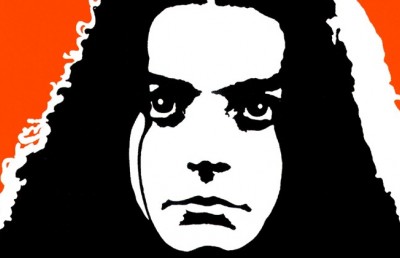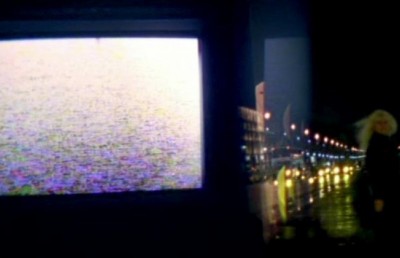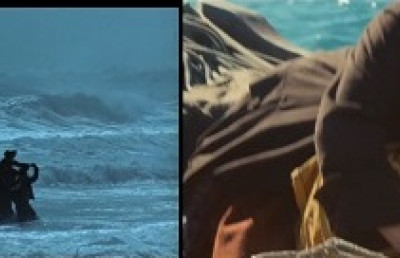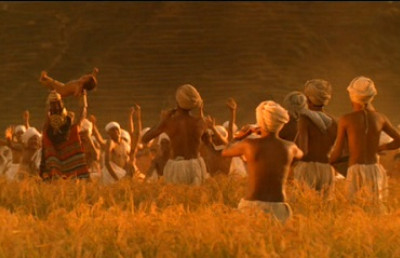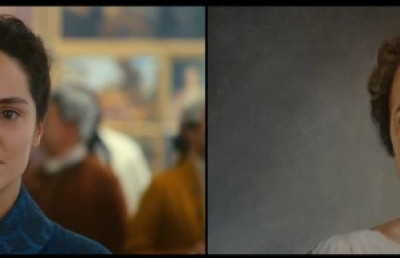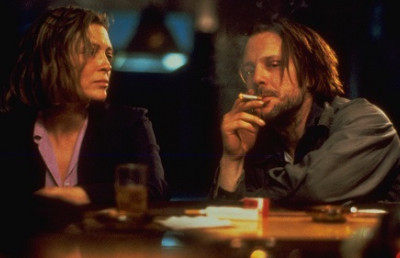The Ending(s) of Cinema: Notes on the Recurrent Demise of the Seventh Art, Part 1
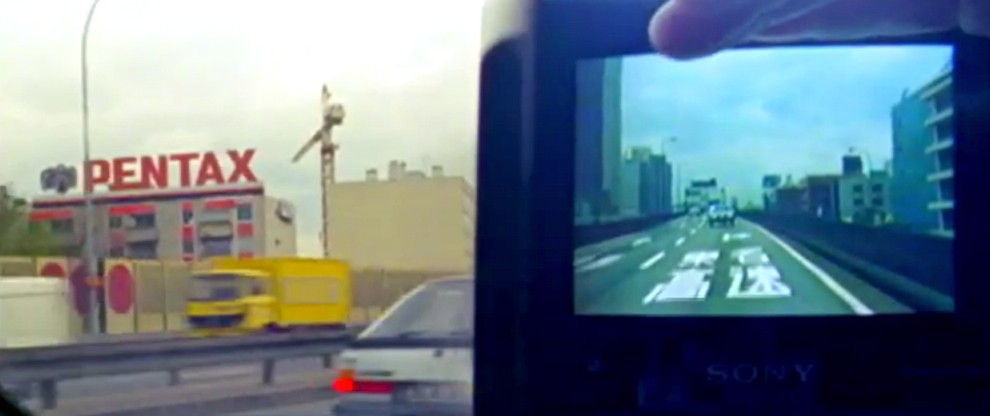
Whither all of the postulations and polemics, so prevalent in our recent pre-millennial cultural moment, concerning the “death of cinema”? It would seem only fair to ask, given that we currently appear to be witnessing a somewhat declining interest in this question relative to the proliferation of academic and journalistic discussions that only several years ago were urgently and authoritatively declaring the cinema’s end to be both imminent and inevitable. The celluloid medium, film critics and cultural theorists alike were noting with no small alarm, is consigned to certain obsolescence, to be superseded shortly and rapidly by new digital technologies of production and presentation. In the new millennium, their arguments went, one could expect that the mutation and convergence of moving image technologies (from HDTV and digital video to the Internet, CD-ROMs and other interactive media) would radically transform every aspect of the cinema from its mode of production to its aesthetics, referential logic, syntactic and narrative conventions, and especially our protocols of consumption and reception. Film critics were mourning the demise of cinephilia, the greatly diminished accessibility, viability and cultural influence of foreign and experimental films attributable to the ever-strengthening hegemony of the multiplex theater and the Hollywood blockbuster with its spectacular special effects and computer-generated imagery. Many of these points-of-view were neatly summed up by New York Press film critic Godfrey Cheshire when the following introduction to the second installment of his two-part article “The Death of Film/The Decay of Cinema” appeared in 1997:
Sometime in the next few years—it may take a decade or more, though a nearer date is more likely—the last commercial theater in the to adopt digital projection will make the switch, and the medium of film will reach its effective end. Thereafter, to see actual films displayed, as opposed to things that may for a while call themselves “films” but in fact are not, you will need to go to places like the Museum of Modern Art and the American Museum of the Moving Image, where projections of celluloid classics will probably remain very popular even while gaining a increasingly archaic air. If you have a child who is a toddler now, the chances are excellent that you will one day have to explain what film was, and how different theaters were before digital projection brought live TV, interactivity, and a dazzling array of other novelties into them, drastically altering what people thought of (and patronized) as moving-image entertainment. 1
Cheshire’s view of the cinema as undergoing such a profound crisis is certainly of a piece with the many other arguments that reopened the debate over the death of film within the context of the cinema’s fin de siècle centenary, each pointing to one or several real andor imminent economic, sociological, aesthetic and technological transformations within the realm of motion pictures; their discourse thus collectively put forth a multi-dimensional causal picture to which the end of cinema might be both anticipated and lamented. My main purpose here will not be to dispute any of these arguments, however hyperbolic some of them might appear; indeed many of these commentaries manifest not only an awareness of developing currents in film technology but a solid and thorough knowledge of film history. Moreover, for my part I am inclined to agree with many of the qualitative transformations in contemporary cinema that these writers have observed, even while as I write these words in the final days of 2002 it becomes apparent with the benefit of hindsight that Cheshire’s postulation of a wholesale upheaval in the art, science and economy of the moving image within a few short years would seem at best to have been premature. The aim of the present discussion will be to map the territory of this most recent death-of-cinema debate, to unravel the various “end-isms” that are conflated therein, in order to analyze and situate these figures both in terms of their relation to a history of discourse on the cinema that has repeatedly viewed the demise of its object as imminent, and in terms of the teleological models that underpin this persistent tendency to postulate an end to cinema. In thus examining the intricate set of logics at work within these figures of the cinema’s death, I shall also suggest how these same logics underpin—and may thereby also inform our reading of—various intermedia practices that in recent years have incorporated the cinematic image, displacing it from its traditional context.
Television Apocalypse
This death of cinema invokes a general notion of contemporary cinematic production as lamentably thin and, in terms of its social function, marginalized and ‘occupied’. Whilst we are free to refute the grounds and pessimism of such a thesis, the notion that the power of the cinema is fading, and that films have come increasingly to resemble pop videos or advertisements, is accepted in many critical quarters. Cinema, within such logic, is ‘outdated’, no longer ‘required’ as a form of cultural representation: less films are made, less people go to the cinema, the films made are worse than they used to be, and so on. 10
Intersecting this debate at various points has been the advent of video as a technology of both distribution and production, the former furthering the crisis in the future of cinema’s institutionalized venue of reception (the darkened theater) already provoked by broadcast television, the latter threatening to completely usurp the techniques and aesthetics of the celluloid medium by way of the electronic moving image. While the video camera’s use was initially restricted to television production and to various forms of artist’s video (from single-channel tapes to video sculpturesinstallations to guerilla television), the more widespread incorporation of video images into motion pictures in the 1980s, notably in the work of Wim Wenders, was again construed as a ‘crisis’ that would signal the end of cinema. For example, Wenders’s 1989 film Notebook on Cities and Clothes—though ostensibly a documentary on Tokyo-based fashion designer Yohji Yamamoto—was conceived as a self-reflexive meditation on the future of cinema vis-à-vis the video techniques employed in its production. At one point in the film, Wenders, in voice-over, states:
All of a sudden, on the turbulent streets of Tokyo, I realized that a valid image of this city might well be an electronic one, and not only my sacred celluloid images. In its own language, the video camera was capturing this city in an appropriate way . . . I was shocked. A language of images was not the privilege of the cinema. 11
A hybrid cinematic work, employing both 35mm film and 8mm video, Notebook on Cities and Clothes may be regarded as one of the harbingers of the wave of more mainstream digital-videofilm productions—both documentary and fiction—that mark the current state of world cinema. Dramatic improvements in digital video technologies throughout the 1990s—increased resolution, anamorphic “widescreen” effects and high-quality video-to-film transfer—seem to have all but eliminated the aesthetic ‘stigma’ of video as a production tool in mainstream cinema, as evidenced by the critical and commercial success of films such as Lars Von Trier’s Dancer in the Dark (Palme d’or, Cannes 2000). Hence the argument put forth in the context of the latest death-of-cinema debate, that the accelerating pace of digital-videofilm convergence will render all distinctions arbitrary—to the detriment (and thus the inevitable demise) of the celluloid medium.
the view of the death of cinema in the face of the horrors of the Holocaust, and the failure of the cinema to confront and work through the Nazi genocide of the Jews (which has inevitably resulted, according to Godard, in the ignominious sidelining of cinema as a vital cultural form, condemned to languish in shame, its current filmmaker representatives pale bureaucratic shadows of those elevated by Godard to his pantheon of great ‘combatants’ such as Eisenstein, Lang or Rossellini). If the cinema is dead, Godard’s late work is a graveyard, peppered with image-tombstones of those who have ‘died in action’. 4
Witt’s analysis of Godard’s oeuvre appears all the more strikingly accurate given the various figures of the cinema’s death that are woven together in the director’s most recent feature film, Éloge de l’amour (2001), a cinematic diptych in which the first part is shot in black and white film (an elegy to a dying art), the second in heavily saturated colour video. The first part concerns film director Edgar (Bruno Putzulu), who while casting his latest production encounters Elle (Cecile Camp), who he is certain that he has met before. After some deliberation, he decides to cast her in the lead role, only to learn that she has died suddenly. In the second part, a flashback to two years earlier, we learn that Edgar and the girl had in fact met when Edgar visited the house of an elderly couple -former Resistance members who survived the Nazi occupation and wish to sell their story to Hollywood. Elle is the aged couple’s granddaughter, dealing on behalf of her relatives in their attempts to make money from their suffering. Like much of Godard’s recent work, Éloge de l’amour is forbiddingly dense with political-historical and film-historical commentary, invoking myriad cinematic references from Jean Vigo to Robert Bresson, as well as numerous witty and cynical remarks referencing the malignant hegemony of American entertainment culture -one scene features a couple of youngsters demanding that The Matrix be dubbed into Breton.
Film history proceeds by an effort to explain the loss of cultural ambience that has evaporated from the moving image in the context of a given time and place. The diverse conditions determining this loss create the need to establish periodisations in the history of moving image destruction and in the human need to destroy images altogether. If all moving images could be experienced as a Model Image (that is, in their intended state, in an intention visible in every part of them even before their actual consumption), no such thing as film history would be needed or possible. 19
In a series of articles published throughout the 1990s, Dominique Païni, director of the Cinématheque française, has also considered the disintegration of film texts in relation to film history, film preservation and the practice of filmmaking. In Païni’s view, we have in recent decades been witnessing the transformation of cinema’s “archival imaginary”—the rediscovery of and engagement with the films of the past by modern cineastes—into an imaginary of the “ruins” of cinema. 20 Païni writes:
Le morceau d’un film isolé, le fragment filmique, n’a eu pendant longtemps de statut muséologique. Pourtant, une histoire du cinéma a été tentée en méconnaissant, finalement, des pans considérables de la production cinématographique mondiale, réduite à l’état de résidus d’ensembles détruits, de morceaux mystérieusement épargnés de la destruction physico-chimique, bref réduite à l’état de ruines filmiques. 21
Païni notes that while formerly the notion of a “preserved” film was virtually synonymous with a film restored and re-shown in its entirety, the preservation and presentation of incomplete films—especially surviving fragments of early cinema from the 1910s—has become more commonplace over the past two decades.[Ibid.]] Moreover, Païni identifies within contemporary film practices a preoccupation with the trace, the fragment, the incomplete, and a renewed interest in recycled and found footage, that would seem to suggest a tendency to recast the history of film not as a successive series of complete works, but as a vast and heterogeneous visual anthropology of film fragments, an archaeology of “ruins.”
Unable to preserve cinema by means of cinema, the archives (no doubt after a few pathetic gestures such as proposing to manufacture film for their own use) will be forced to face up to reality and go for other options. Projecting a film will become first a special circumstance, then a rare occurrence, and finally an exceptional event. Eventually, nothing will be projected at all, either because all surviving copies will be worn to a frazzle or decomposed, or because somebody decides to stop showing them in order to save for future duplication onto another format the few prints that remain. There will be a final screening attended by a final audience, perhaps indeed a lonely spectator. With that, cinema will be talked about and written about as some remote hallucination, a dream that lasted a century or two. Future generations will be hard put to understand why so many people spent their lives in an effort to resuscitate that dream. 22
The Sense(s) of Ending
What are we to make, then, of the various cinematic “traumas” elaborated herein—this ongoing series of terminal crises, each predicated on a particular definition of cinema, be it aesthetic, technical, sociological, ideological, etc.? Moreover, how might we understand the pervasive need to invoke andor redeploy these figures within the most recent fin de siècle pronouncements of the cinema’s death? To begin with, we might note that all of these arguments have their basis in a rectilinear view of history, that is to say, a forward-moving succession of events and transformations that constitute the historical teleology of the cinema. As Susan Sontag’s argument states: “Cinema’s 100 years seem to have the shape of a life cycle: an inevitable birth, the steady accumulation of glories and the onset in the last decade of an ignominious, irreversible decline.” 23 And clearly, no passing of these crises, nor any refutation of their underlying principles, would seem to permanently falsify their fundamental postulate: that the cinema is destined to end. We might put forth such counter-arguments as the remarkable stability of 35mm as the standard film gauge (with four sprocket holes per frame, going back as far as Edison’s Kinetoscope) and of cinema’s modes of production (the film industry) and reception (the darkened theater), the continuing coexistence of both cinema and television in the new millennium, the discovery that nitrate prints may not decompose nearly as quickly as previously believed when stored at correct temperatures, etc. etc. For all of this, the end-of-cinema postulate continues to impose itself within contemporary cultural discourse. This apparent paradox, in my view, carries a more-than-superficial connection to historical notions of apocalypse, which also, as the literary theorist Frank Kermode has noted, are rectilinear in structure and continually adjust their postulates in the interest of reality and control. 24 It would thus be worthwhile to elaborate a few of Kermode’s remarks on apocalypse in more detail before I move on to a closer examination of the various teleological paradigms that underpin the most recent “death of cinema” debate.
In his 1965 series of lectures, collected under the title The Sense of an Ending: Studies in the Theory of Fiction, Kermode has discussed the relationship between apocalyptic thought and fiction. For Kermode, fiction originates in a basic need to relate experience to grand beginnings and ends; the notion of apocalypse, in which the “end” resumes the whole structure of the narrative, is fundamental to this pattern that we project onto historical time. Apocalypse thus “ends, transforms and is concordant,” which is to say that its principles are dependent on a credible and consonant relationship between an “imaginatively recorded past and an imaginatively predicted future.” 25 Kermode relates various historical and literary cases to this model: theological ends and fin de siècle myths—which postulates may be freely manipulated in order to achieve a desired consonance—are taken as examples of naïve apocalyptism, with attendant terrors andor decadence. In modernity, apocalypse is no longer conceived strictly by reference to a common end, but more often to personal deaths, localized crises, the ending of an epoch, and so on; within these cases, the relations of beginning, middle and end are constantly altering. 26 For Kermode, then, modern apocalyptic ‘ends’ cannot be imminent (such pronouncements would not be credible); rather, they are immanent, that is to say, ubiquitous and perpetually recurring.
Given Kermode’s arguments, one can scarcely resist forwarding the view that the strength and pervasiveness of “death of cinema” postulations at the end of the twentieth century were, at least in part, a function of their concurrence with the naïve doomsday prophecies and the accompanying discourse of “terrors and decadence” that preceded the turn of the millennium. The widespread anxiety over the possible failure of our global technological infrastructure to survive into the year 2000—crippled with the “Y2K bug”—seemed to portend a technological apocalypse of unforeseen proportions. And for her part, Sontag stated the view that: “Cinema, once heralded as the art of the 20th century, seems now, as the century closes numerically, to be a decadent art.” 27 Yet this is only part of the story. It is also necessary that we examine the different, overlapping teleological paradigms that have configured the “death of cinema” in concord with the “birth of cinema,” that is to say, how the various pronouncements of the cinema’s end have necessitated a re-writing of cinema’s beginnings. These teleological models—transition, double-movement and negation—and the historical reconfigurations they have entailed, often bringing obscure and marginal histories to the fore, are the subject to which I will turn to in detail in part two.
Read Part 2 Here.
Notes
- Godfrey Cheshire, “The Death of Film/The Decay of Cinema,” New York Press, vol. 12, no. 34 (26 August 1998). ↩
- Michael Witt, “The Death(s) of Cinema According to Godard.” Screen, 40.3 (Autumn 1999), 333. ↩
- Introduction to Leo Charney and Vanessa R. Schwartz, eds. Cinema and the Invention of Modern Life. Berkley and Los Angeles: University of California Press, 1995, 1. ↩
- Witt, “The Death(s) of Cinema According to Godard,” 334. ↩
- Pierre Leprohon, Histoire du cinéma muet: vie et mort du cinématographe (1895-1930) (Paris: Editions d’Aujourd’hui, 1982). ↩
- Witt, “The Death(s) of Cinema According to Godard,” 334. ↩
- Jean-Luc Godard, in “Jean-Luc Godard: La France reste à l’avant-garde. . . de la régression“ (interview with Frédéric Ferney), Le Monde, 11 December 1990, 29. Quoted in Witt, “The Death(s) of Cinema According to Godard,” 333. ↩
- See Sylvia Harvey, “What is Cinema? The Sensuous, the Abstract and the Political,” in Christopher Williams, ed. Cinema: The Beginnings and the Future (London: University of Westminster Press, 1996), 228-52. ↩
- Susan Sontag, “The Decay of Cinema,” New York Times, 25 February 1996, 1. ↩
- Witt, “The Death(s) of Cinema According to Godard,” 336. Among the numerous books and articles dealing with cinema in the age of television see especially Serge Daney, Le Salaire du zappeur (Paris: Editions Ramsay, 1988), as well as the proceedings from the international symposium on film and television held at Cinematheek Haags Filmhuis, The Hague, in 1993: Thomas Elsaesser and Kay Hoffmann (eds.), Cinema Futures: Cain, Abel or Cable? (Amsterdam: Amsterdam University Press, 1998). ↩
- Notebook on Cities and Clothes, dir. Wim Wenders (1989). ↩
- Witt, “The Death(s) of Cinema According to Godard,” 335. ↩
- Roger Boussinot, Le Cinéma est mort, vive le cinéma (Paris: Denël, 1967). ↩
- Witt, “The Death(s) of Cinema According to Godard,” 334. ↩
- Ibid., 331. ↩
- Cheshire, “The Death of FilmThe Decay of Cinema.” ↩
- Wheeler Winston Dixon, The Second Century of Cinema: The Past and Future of the Moving Image (Albany: SUNY Press, 2000), 4. ↩
- Paolo Cerchi Usai, The Death of Cinema: History, Cultural Memory and the Digital Dark Age (London: BFI, 2001). ↩
- Ibid., 21. ↩
- Dominique Païni, Le Cinéma : un art moderne (Paris: Cahiers du cinéma, 1997), 137; 145. ↩
- Ibid., 141. ↩
- Usai, The Death of Cinema, 123-24. ↩
- Sontag, “The Decay of Cinema,” 1. ↩
- Frank Kermode, The Sense of an Ending: Studies in the Theory of Fiction (New York: Oxford University Press, 1967), 17. ↩
- Ibid., 5; 8. ↩
- Ibid., 35. ↩
- Sontag, “The Decay of Cinema.” ↩


-resize-crop_400_258_90_s_c1.jpg)

